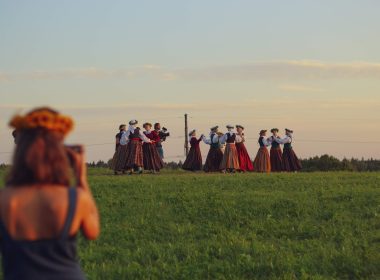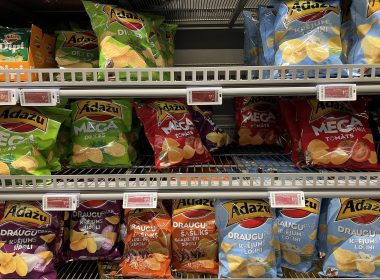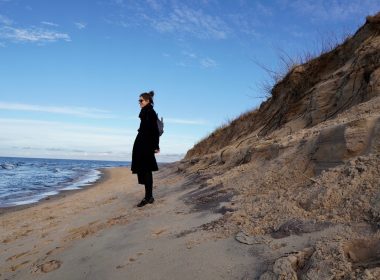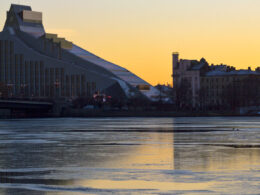Each social group has its in-jokes, habits and traditions that can be hard for newcomers to pick up on. In this post I introduce 15 experiences that Latvians will find familiar, possibly comforting or annoying, depending on the memories we associate with them. Not all of them are traditions. They’re phenomena, which may bring you closer to achieving that mystical sense of belonging to a place – in this case, Latvia.
Bankets
The banketu zāle (function room) comes to the rescue when you need a bigger space than your living room to celebrate significant birthdays, anniversaries, christenings and such. It either comes with its own cook or welcomes external catering.
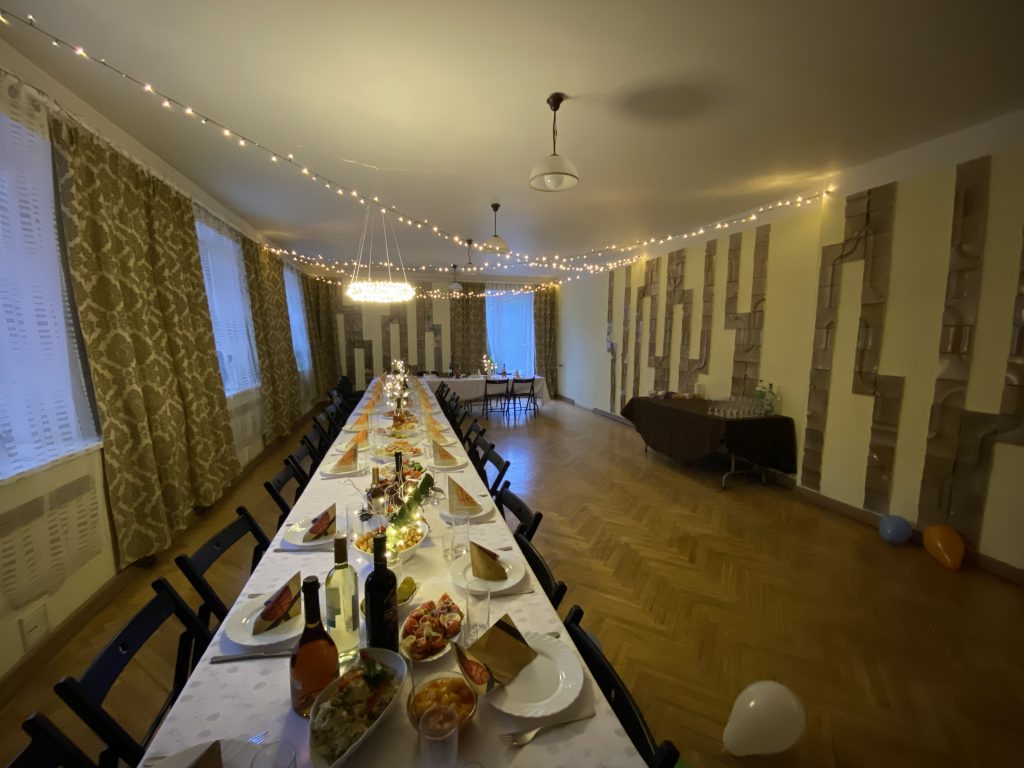
The common bankets (buffet-type meal) is characterised by far too much food and the excessive use of animal products. Think mayo-drenched salads, five varieties of hot and cold meats, and cream-based dipping sauces for the few green veggies floating about. Galdi lūzt (literally – the tables are breaking) is a good expression to know.
You usually arrange your own bar, music and decorations. The venue may come with extras like a game room or pirts (sauna).
Pirts
The ultimate pirts experience is a body, mind and spirit cleansing ritual. While there is no one “right formula”, it will likely involve a gradual increase in heat, taking it slow, sipping herbal tea in between the sweat sessions, honey scrubs, jumping into a pond and being massaged with leafy “besoms” by a pirtnieks or master of the pirts ceremony. The more you give in to the experience, the more you get the magic. You may even be visited by the mythical pirts gariņš (sauna spirit).
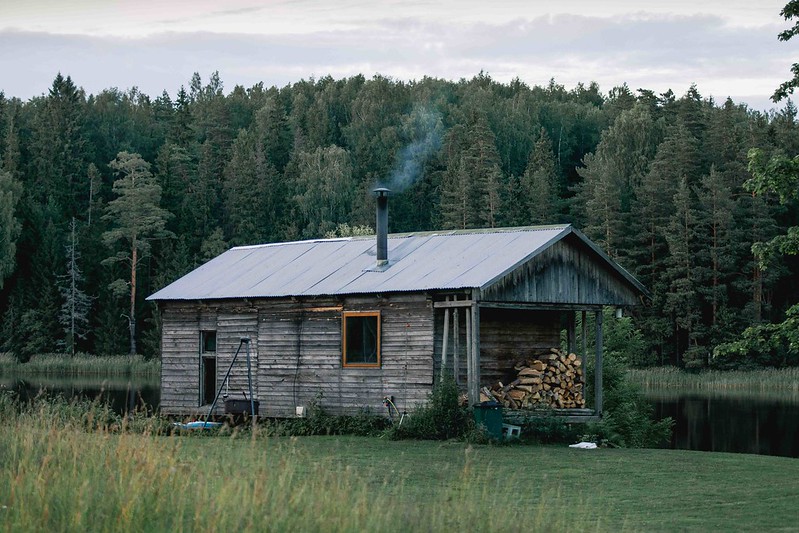
However, today, for many, the pirts serves as an excuse or reason to party. Far from a spiritual gathering, it may involve alcohol, crisps and loud music, which a proper pirtnieks would never approve of.
For my generation – millennials – the pirts holds memories of underage drinking, dancing to 50 Cent and navigating new social situations. Someone would hire a pirts or viesu nams (guest house), we’d all chip in to cover the rent and use it as a party venue. Thankfully, most people never actually used the pirts, just the hall next to it.
Choose your own destiny! I’m all for the classic experience these days, which is best enjoyed in rural Latvia.
The pirts also came up in previous posts – Is there a Latvian equivalent of hygge? and Boost your immune system the Latvian way.
Eating a karbonāde
A must-eat. This legendary slab of battered chicken or pork is typically bigger than the size of your palm. Roadside pubs and places outside Latvia’s major cities are your best bet for getting the real deal. You may get lucky outside the centre in Riga.
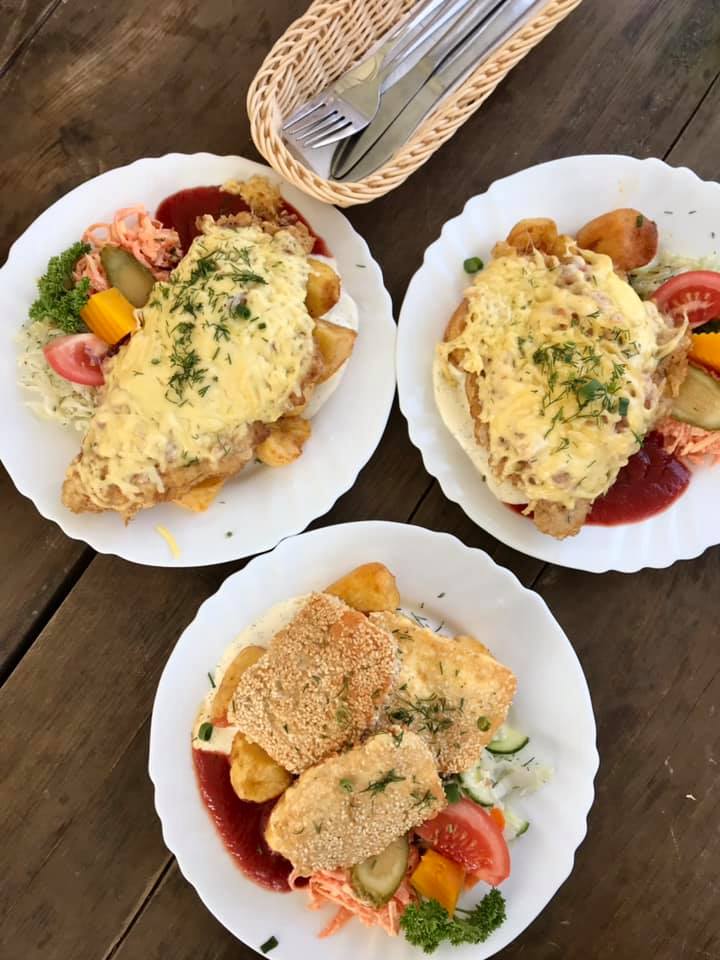
Useful phrases to know in regards to the karbonāde:
Majonēzes restīte – mayonnaise lattice. Often decorates the top of the karbonāde.
Vārīti-cepti kartupeļi – par-boiled roast potatoes. A popular side dish.
Pusīte – a half-portion.
The vegetarian alternative is usually cepts siers – a deep-fried battered chunk of cheese. In Riga, I’ve seen a vegan, soy-based version of the karbonāde at Kozy eats.
The karbonāde is also on my list of Mouthwatering things to eat in Riga.
Kapu svētki (cemetery fair or festival)
In Latvia, we take good care of our loved ones even after they’ve left this world. So much so that cemetery culture is part of Latvia’s Cultural Canon. And visiting our ancestors’ graves isn’t just an intimate family affair. Several times a year, people gather for bigger events like svecīšu vakars (candle evening) and kapu svētki.
The kapu svētki is when relatives flock from near and far to commemorate the ones who have passed and be merry with the ones who live on. It’s not a sombre occasion. On the day, people tend to their family graves, attend a service and maybe have a drink and snack at the cemetery before a shared meal at the family home. The event may continue with a zaļumballe in the evening.
I wrote more on the kapu svētki for 3SeasEurope.com.
Zaļumballe
Like a one-day festival at the local estrāde (amphitheatre), the zaļumballe is an occasion for people to meet, mingle and let loose. For those who live in smaller towns or rural areas, it’s an alternative to the pubs and clubs of the city. Back in the day, it was a more glamorous affair with live music. Today, the live band may be replaced by a DJ and the typical repertoire will include schlager music. This is a legendary piece:
Here are a couple more to continue with:
“Kaija” by Bruģis
“Balle Baložos” by Jātnieki
For those who read Latvian, the Satori journal published a deeper overview of the zaļumballe tradition, its history and current state in Latvia.
If you do get the chance to dance at a zaļumballe, try not to get involved in any klopes (fights)!
Talka
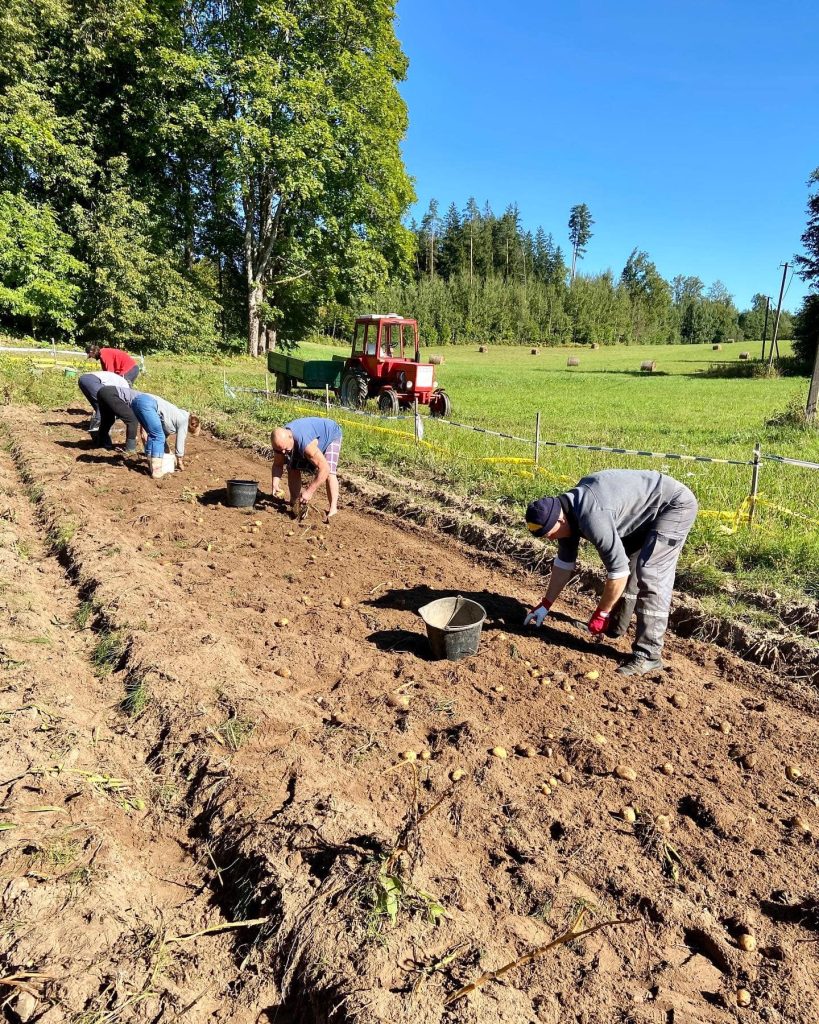
When friends and family or colleagues get together for a spot of manual labour. It may involve picking potatoes, sourcing, chopping and sorting firewood or clearing out years of junk. Once the work is done, the food comes out, likely accompanied by beer or a little something stronger. By then you’ve earned it. This occasion blurs the line between work and play.
The talka came up in an earlier piece too – Where do Rigans go at the weekend?
Jāņi (Midsummer)
Another opportunity to leave the city (notice how Latvians seem to gravitate towards the countryside). This is a celebration in honour of the summer solstice and fertility. Many of the symbolic festive traditions are still alive today, like making floral wreaths, jumping over the bonfire, making and eating caraway cheese.
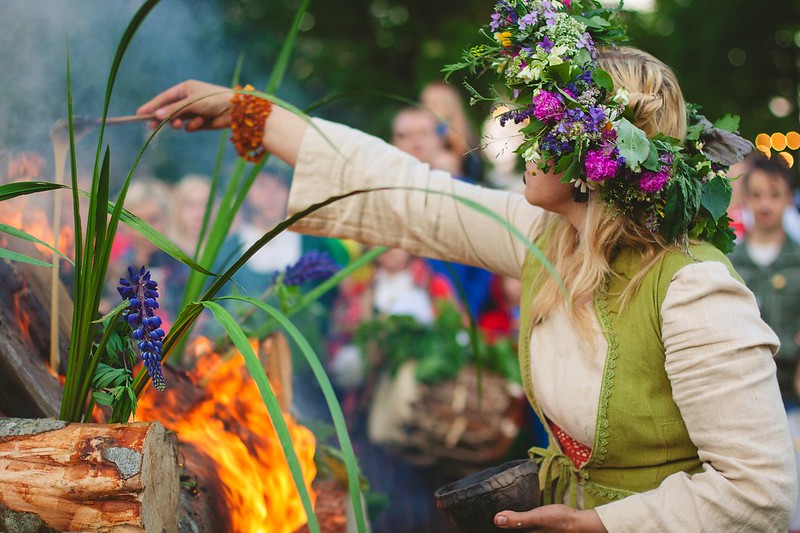
While some may take it less seriously these days, Jāņi still manages to bring people together, no matter how authentically they choose to celebrate.
Latvia.travel has published a handy article about Jāņi if you want to know more.
Teātra apmeklējums (a theatre visit)
Latvians are a theatre-loving nation, and tickets to leading directors’ shows sell like hot cakes. Most people get at least a bit dressed up for the occasion. Before the show or during the interval, it’s common to stand in line to the theatre bar for a glass of Rīgas šampanietis (local bubbly), a shot of blackcurrant balsam, and a slice of cake, open sandwich or mini portion of salad.
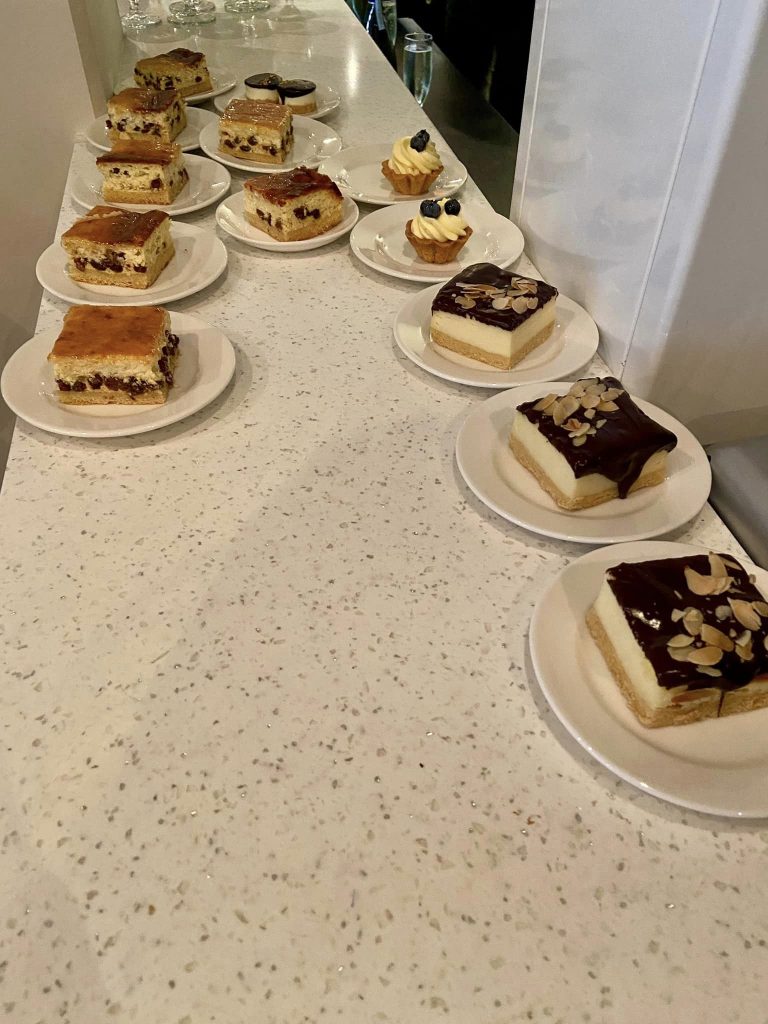
After the show, when the actors take a bow, you’ll see people rushing to the stage to give flowers to those they know or most admire.
If you get the chance to see a show at Dailes teātris or Nacionālais teātris, the epic buildings alone attest to Latvians’ love for theatre.
Pilsētas svētki (town fair)
When Latvia’s villages, towns and cities put on a show to celebrate their birthdays. Depending on the size of the place, it may involve a farmers and crafts market, performances by local dance and folklore troupes and choirs, pop-up food stalls and bars, evening concerts, sports competitions and parades.
Zvejnieksvētki (Fishermen’s festival)
A relative of the pilsētas svētki, the Zvejnieksvētki take place in coastal communities. At its heart, the event honours the sea that has sustained the communities and the fishermen who bring the catch to our tables. These days, it may go under the name of Jūras svētki (Sea festival). You’re sure to get a bowl of fish soup and fresh smoked fish if you want it.
Lunch at an ēdnīca
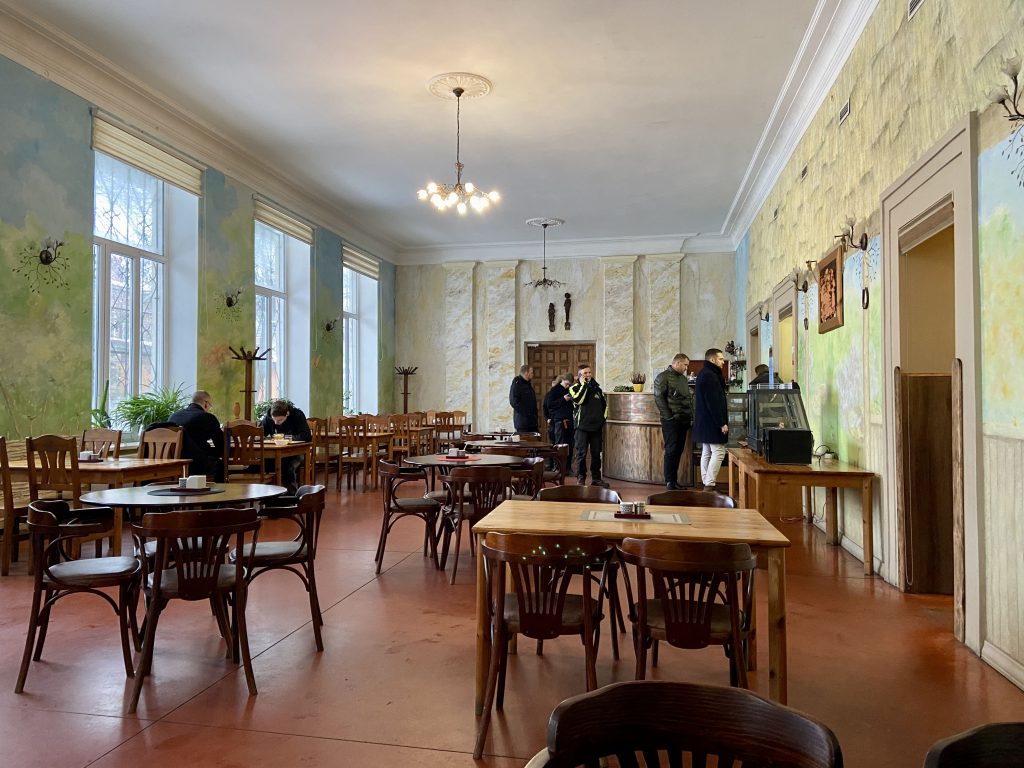
When you don’t expect or need anything more than a calorie fix, the ēdnīca (canteen/cafeteria) delivers. It’s a no-frills dining establishment that most Latvians get to know at school. While some choose to leave it in the past in favour of the cafe or restaurant as they transition into adulthood, others remain loyal to the reliable, affordable and unpretentious ēdnīca.
I have written a separate post on the joys of the ēdnīca.
Imantdienas music festival
A musical celebration in honour of the legendary Latvian composer and political figure Imants Kalniņš. Every year since 1976, it gathers hordes of listeners and some of Latvia’s most legendary musicians. These days, the concert takes place on the open-air stage at the foot of Cēsis Castle – possibly one of the most scenic venues in Latvia (but I’m biased since my grandmother grew up in Cēsis, my dad now lives there and I’m a weekend resident).
“The music of prolific composer Imants Kalniņš is definitely part of the cultural DNA of every Latvian. His are the kind of songs you’ll hear sung around campfires in the early hours of the morning, because the melodies are so well-known; sentimental without straying into the saccharine,” wrote my sister Liāna in a previous post – 18 iconic songs to help you understand Latvia and Latvians.
A concert by Prāta vētra
You may love or hate them, but their sell-out shows suggest most people love them. Prāta vētra is the kind of band who can stop singing but the audience will just carry on for them.
Two of their songs also appear in 18 iconic songs to help you understand Latvia and Latvians.
Dziesmu un deju svētki (Song and Dance Festival)
Ideally, you’d want to take part in the grand finale concert at the Mežaparks Open-air stage, but there are a few prerequisites: 1) you either need to sing or dance well, 2) you must commit to an intense (!) schedule of rehearsals. For those of us not gifted or dedicated enough (yet), the ten-day festival has a whole host of ticketed and free events to attend. The parade is a must when the thousands of festival participants weave their way through the city in folk costumes and floral wreaths.
The festival and particularly its closing concert have a cathartic and intensely unifying quality as you can see in the ecstatic, tear-filled faces in the video.
Lighting candles on 11th and laying flowers on 18th November
The week from 11 November to 18 November is Patriots’ Week in Latvia. On 11 November, people light candles in memory of and gratitude to the Latvian Freedom Fighters. In Riga, this happens at 11.novembra krastmala – the street between Riga Castle and the river Daugava. LSM has an article on the significance of the so-called Lāčplēsis Day.
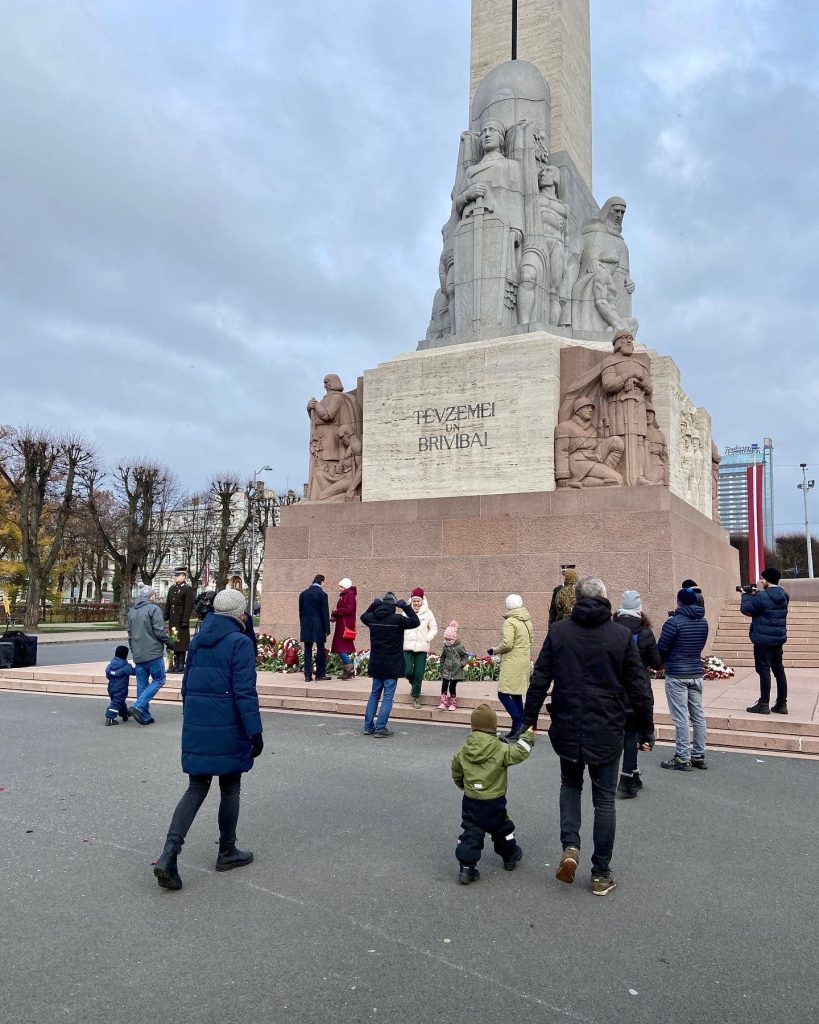
18 November is the Independence Day of Latvia. On this day in 1918, Latvia became a republic. Today, one of the yearly rituals locals carry out is the laying of flowers at the foot of Brīvības piemineklis (the Freedom Monument) to thank those who fought for our independence and show our appreciation for today’s democracy. Other events on the day are the military parade, president’s speech and performances at the monument.
This is a subjective list with a few contributions crowdsourced via Facebook. Thank you for your ideas! Have any true local experiences to add? Drop them in the comments section below along with your feelings about or memories of it!


